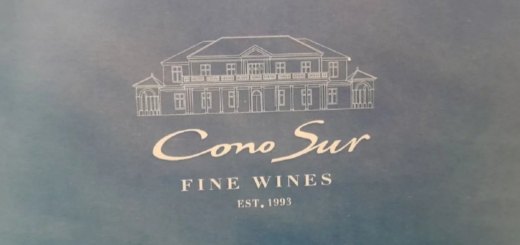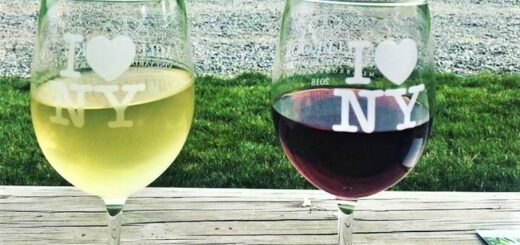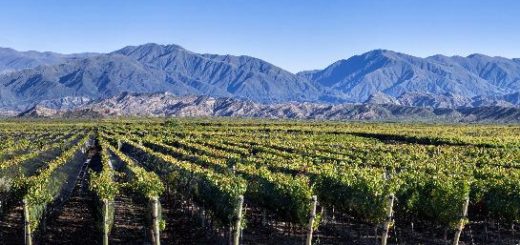Dublin Wine Festival at the Morrison Hotel
The second edition of DWF was held at The Morrison Hotel with country partners Italy, this means that about 30 Italian winery, selected by the organizer, sampled their top products like Prosecco, Barolo, Amarone, Chianti, to importers, trader for wine and spirits, gastronomy experts and buyer for hotels and restaurants.
DWF’s visitor concept ensures that professionals have half day dedicate, this means more focus on business first and more concentration on final customers in late afternoon. DWF is the Irish event for high quality wine. Once you get your ticket you can taste whatever you want. Wine producers are at your disposal to answer to all your question about their products.
Major Italian White Wines
Italian white wines come in varieties that run from sparkling and sweet to smooth and fruity to crisp and dry. The following list describes each of the major Italian white whites:
- Asti: Sparkling wine made from Moscato grapes around Asti, in Piedmont. Deliciously sweet, low in alcohol, with pronounced fruity and floral flavours. Usually non-vintage, but freshness and youth are essential to its quality.
- Frascati: From the Frascati area, south of Rome, and mainly Trebbiano grapes. Dry or slightly off-dry, light-bodied, and un-oaked with crisp acidity and subdued flavour.
- Gavi: Dry, medium-bodied wine from Cortese grapes in the Gavi area of Piedmont. Typically crisp and un-oaked (sometimes slightly oaky) with delicate notes of honey, apples, and minerals.
- Orvieto: A generally medium-bodied wine made mainly from Grechetto grapes around Orvieto, in the Umbria region. Dry, crisp, with flavors of pear and apple and a pleasantly bitter finish.
- Pinot Grigio: Generally light-bodied, dry, and crisp, with subdued aromas and flavours and no oakiness. Made from Pinot Gris grapes, usually in North-eastern Italy. Wines from Collio or Alto-Adige DOCs (controlled origin denomination) are usually the best.
- Soave: From the Soave zone in the Veneto region, made mainly from Garganega grapes. Generally dry, crisp, un-oaked, and light- or medium-bodied, with subdued flavours of pear, apple, or peach.
- Verdicchio: Dry, medium-bodied, crisp white with minerally flavour and a sea-air freshness. From Verdicchio grapes in the Marche region.
Major Italian Red Wines
Italian red wines bring up the image of grape-stomping parties that provide fun for the whole village. Fortunately, you don’t have to press the grapes yourself to enjoy a bottle of good Italian red wine. The major reds are described in the following list:
- Amarone: Lusty, full-bodied wine from partially-dried Corvina grapes, in the Veneto region. Dry and firm wine, but its ripe, concentrated fruitiness suggests sweetness. Needs rich, savoury foods or flavourful cheeses.
- Barbaresco: Similar to Barolo, from the same grape in a nearby area, but generally a tad lighter in body and slightly more approachable. Drinks best at 8 to 15 years of age, depending on the producer.
- Barbera: Varietal wine produced mainly in the Piedmont region. Dry, light- or medium-bodied, with intense berry flavour, mouth-watering acidity, and little tannin. Particularly versatile with food. Many of the best wines are from the Alba or Asti zones.
- Barolo: Dry, full-bodied, magisterial wine from Nebbiolo grapes in the Barolo area of Piedmont. Have complex aromas and flavours of strawberries, tar, herbs, and earth, as well as a firm, tannic structure. Drinks best at 10 to 20 years of age, depending on the producer.
- Brunello di Montalcino: Full-bodied, intense, concentrated wine from Sangiovese grapes grown in the Montalcino zone of Tuscany. Dry and quite tannic, it drinks best when it’s at least 15 years old.
- Chianti: Very dry, medium-bodied, moderately tannic wine with lovely tart-cherry flavour, mainly from Sangiovese grapes grown in the Chianti area of Tuscany. “Chianti Classico” is often the best. Some wines are good young; wines labeled riserva, and pricier wines, are generally more concentrated and age-worthy.
- Lambrusco: Most commonly a sweet, fizzy wine with delicious, grapey flavors. Made from Lambrusco grapes usually in the Emilia-Romagna region. Dry and sparkling styles also exist.
- Montepulciano d’Abruzzo: Generally medium-bodied and flavorful with red fruits and a slightly vegetal note. Lighter examples are smooth and easy to drink; the best wines are concentrated and denser in texture. From the Montepulciano grape, in the Abruzzo region.
- Salice Salentino: Dry, full-bodied wine from Negroamaro grapes in part of the Puglia region. Generally have somewhat intense aromas and flavours of ripe, plummy, baked fruit, and rich, dense texture. Suitable with robust foods.
- Valpolicella: Medium-bodied wine mainly from Corvina grapes in the Valpolicella area of Veneto region. Dry, lean, and only moderately tannic, with more or less intense cherry aromas and flavours. Some versions, such as single-vineyard wines, are particularly good.
- Vino Nobile di Montepulciano: Medium-bodied, dry, and lean, with red cherry flavour, similar to Chianti but slightly fuller. Made from Sangiovese grapes in Montepulciano, in the Tuscany region.
Italian Wine Grapes
Sometimes you know the name of the grape used to produce the nice Italian wine you’re drinking because the name of the grape and the name of the wine are the same. But that’s not always the case, so if you want to match the Italian wine to the principal grape (or grapes) used to make it, consult the following table:
| Wine Type | Colour | Principal Grape(s) | Wine Type | Colour | Principal Grape(s) |
| Amarone | Red | Corvina, others | Lambrusco | Red | Lambrusco |
| Barbaresco | Red | Nebbiolo | Montepulciano | Red | Montepulciano |
| Barbera d’Alba | Red | Barbera | Orvieto | White | Grechetto, others |
| Bardolino | Red | Corvina, Rondinella, others | Soave | White | Garganega, others |
| Barolo | Red | Nebbiolo | Taurasi | Red | Aglianico |
| Brunello | Red | Sangiovese | Valpolicella | Red | Corvina, Rondinella, others |
| Chianti | Red | Sangiovese, others | Verdicchio | White | Verdicchio |
| Dolcetto d’Alba | Red | Dolcetto | Vernaccia | White | Vernaccia |
| Gavi | White | Cortese | Vino Nobile | Red | Prugnolo (Sangiovese) |
Pronunciation Guide to Italian Wine Names
To fully enjoy your Italian wine-drinking experience, practice with the following pronunciation guide — the syllable in all CAPS is the one to accent. Soon, you’ll be speaking Italian like a true wine lover.
- Amarone: ah mah RO nae
- Brunello di Montalcino: brew NEL lo dee mahn tahl CHEE no
- Chianti Classico: key AHN tee CLAHS see co
- Dolcetto: dohl CHET toh
- Frascati: frah SKAH tee
- Lacryma Christi: LAH cree mah CHREE stee
- Montepulciano: mon tae pull chee AH noh
- Moscato d’Asti: mo SCAH toh DAHS tee
- Pinot Grigio: pee noh GREE joe
- Rosso Cònero: ROHS so COH neh ro
- Salice Salentino: SAH lee chae sah len TEE no
- Soave: so AH vae
- Taurasi: touw RAH see
- Verdicchio: over DEE key oh
- Vino Nobile di Montepulciano: VEE no NO bee lae dee mahn tae pool chee AH no
Thanks to all the producers and exhibitors’…..we look forward to DWF 2019.
Some of the best selections of Italian Wine here
https://www.obrienswine.ie/wine/country-region/italy.html
https://winesdirect.ie/buy-italian-wine-online




